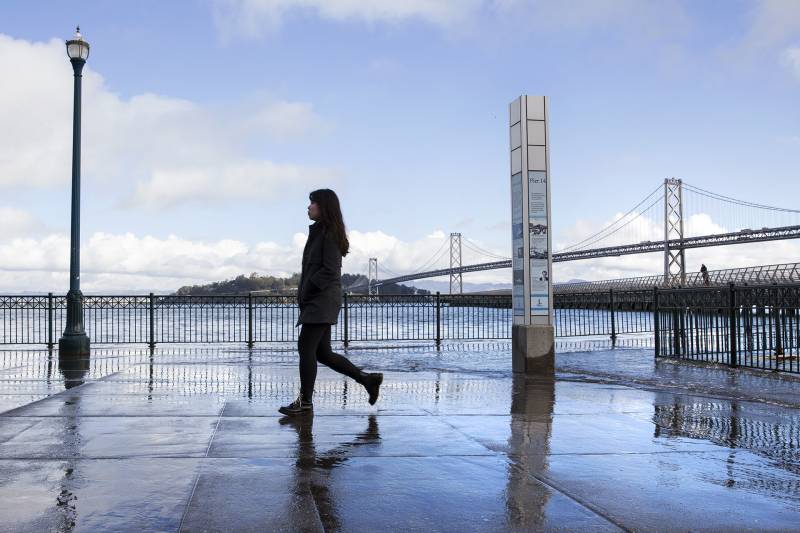“There’s nothing new or dangerous about the wobble; it was first reported in 1728,” NASA’s release said. “What’s new is how one of the wobble’s effects on the moon’s gravitational pull — the main cause of Earth’s tides — will combine with rising sea levels resulting from the planet’s warming.”
Scientists worry that as the tides amplify in the next decade, cities around the Bay will see more flooding. The San Francisco Bay has risen by about eight inches since 1990, the Mercury News reported. But by the midcentury that could increase by up to 1.9 feet, before accelerating even more towards the end of the century.
Phil Thompson, lead author of the study, said cities will likely experience accumulating impacts from what academics call nuisance flooding — water from high tides spilling on streets, into parking lots, parks, and neighborhoods, regularly disrupting life and business. “If it floods 10 or 15 times a month, a business can’t keep operating with its parking lot under water,” he said.
The real doozy, Hamlington says, is that a certain level of sea rise is already baked in, and will surge as the temperatures rise and oceans warm. San Francisco could see 31 additional flooding days per year on average during the 2030s.
The team examined the impacts under low-medium and medium climate warming emissions scenarios. They forecast that flooding will be experienced at different moments across the Bay Area.
Hamlington says natural drivers of flooding like El Niño could also make flooding worse, and the impact of sea level rise will be clearly evident in the next decade.
“A lot of those flooding days that you see now are going to be that much more severe,” he said. “We are going to see some abrupt transitions. I think it’s important for coastal planners to understand that, in a lot of cases, you need to start preparing now. Some of the adaptation strategies that are being discussed need to be put in place sooner rather than later.”

